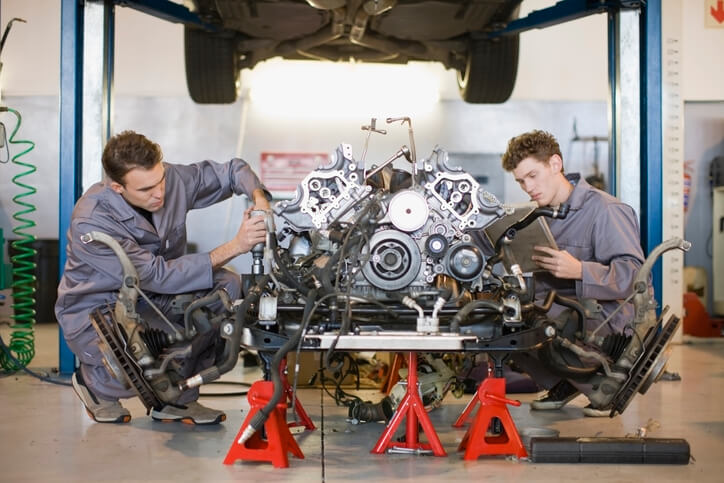In Automotive School? All You Need to Know About Mazda’s Rotary Engine Development
Mazda, a brand you’ll discover in automotive school, is historically synonymous with the rotary engine. It has officially relaunched its Rotary Engine (RE) Development Branch, marking a significant move towards modernizing this unique engine technology.
The reintroduction of the rotary engine came at a time when Mazda was looking to bolster its stance in the electric vehicle market.
Despite trailing in the electric race, Mazda has not waned in its effort to deliver high-quality and performance-driven products. The rotary engine, known for its compact and efficient design, provides a promising solution to extend the range of electric vehicles (EVs).
The Rotary Engine Explained For Automotive Training Students
At the heart of Mazda’s innovations is the rotary engine, a type of internal combustion engine that stands out for students in automotive school with its compact and lightweight design. Unlike the traditional piston engines that dominate the automotive world, the rotary engine operates on the principle of rotary motion.
The engine uses a design known as the Wankel engine, named after its inventor, Felix Wankel. This engine features a triangular rotor that orbits within a chamber, completing all four strokes of the Otto cycle (intake, compression, power, and exhaust) in different chamber regions.
This unique operation allows the rotary engine to be exceptionally smooth and capable of achieving high revolutions per minute (RPMs), contributing to its reputation for high performance. Its compact size and the absence of reciprocating parts (parts that move back and forth) reduce vibration and allow for a lighter engine, significantly improving a vehicle’s power-to-weight ratio.
However, despite its benefits, the rotary engine has faced challenges, including lower fuel efficiency and higher emissions than piston engines, which have limited its adoption.

The Relaunch of the RE Development Group
After almost six years, Mazda’s RE Development Group has been reinstated, marking February 1, 2024, as the beginning of a new chapter in rotary engine research and development. This newly formed group, composed of 36 engineers, is tasked with advancing rotary engines (RE) to meet contemporary challenges, including regulatory compliance and exploring carbon-neutral fuels. The group’s primary focus will extend beyond traditional applications, aiming to innovate REs used as generators, among other pivotal roles in Mazda’s lineup.
Mazda’s decision to relaunch the RE Development Group is deeply rooted in its commitment to “Human-centric” innovation and the joy of driving. Under this initiative, Mazda promises to keep delivering cars that not only excite customers and professionals with automotive training alike but also align with the goals of a carbon-neutral society.
The rotary engine’s comeback is pivotal. Mazda has already showcased its potential in modern applications, like the Mazda MX-30 e-SKYACTIV R-EV, which reintroduced the rotary engine as a range extender.
A New Focus On Sustainability With the Rise of EVs
Mazda’s revitalized focus isn’t just on bringing back the rotary engine but on doing so in a way that aligns with contemporary environmental standards and sustainability goals. The development team will explore using carbon-neutral fuels and compliance with regulatory standards, indicating a shift towards more eco-friendly automotive solutions.
This includes the potential use of synthetic fuels and Mazda’s exploration of seaweed-derived biofuel, showcasing the company’s commitment to reducing its carbon footprint while continuing to innovate.

The revival of Mazda’s RE Development Group signifies more than just an engineering endeavor; it represents a continuation of Mazda’s ‘challenger spirit’ and its dedication to delivering the joy of driving. By investing in the research and development of rotary engines adapted for the modern era, Mazda aims to create a synergy between the distinct characteristics of rotary engines and the efficiency of electric powertrains.
As the automotive industry moves towards electrification and carbon neutrality, Mazda’s initiative to rejuvenate its rotary engine technology could pave the way for unique solutions that combine the efficiency of EVs with the beloved performance characteristics of rotary engines.
This innovative approach could offer a distinctive edge in the competitive automotive sector, highlighting Mazda’s commitment to innovation, sustainability, and driving experience.
Do you want to become a mechanic and kickstart your career?
Contact ATC Montreal for more information.


